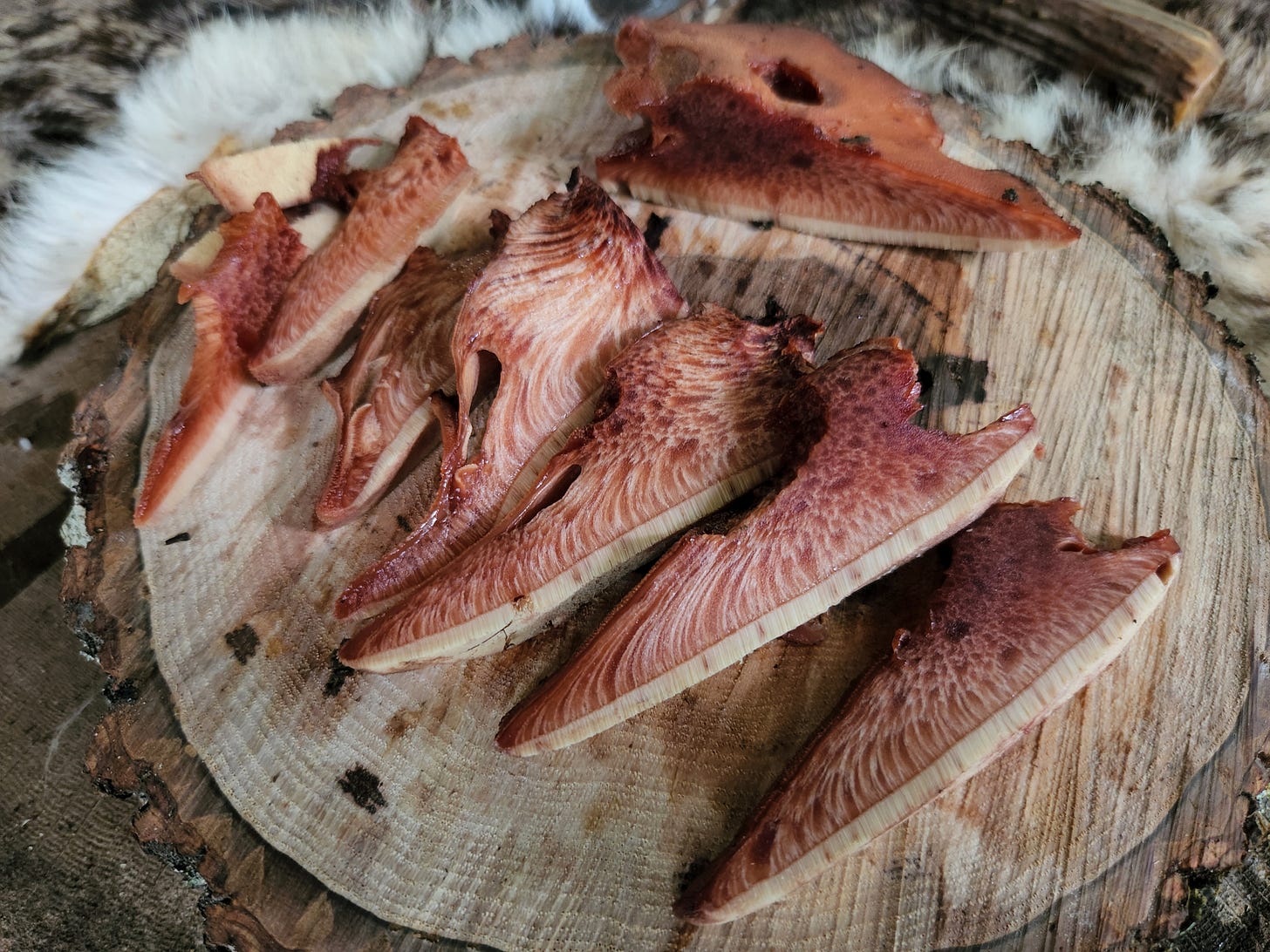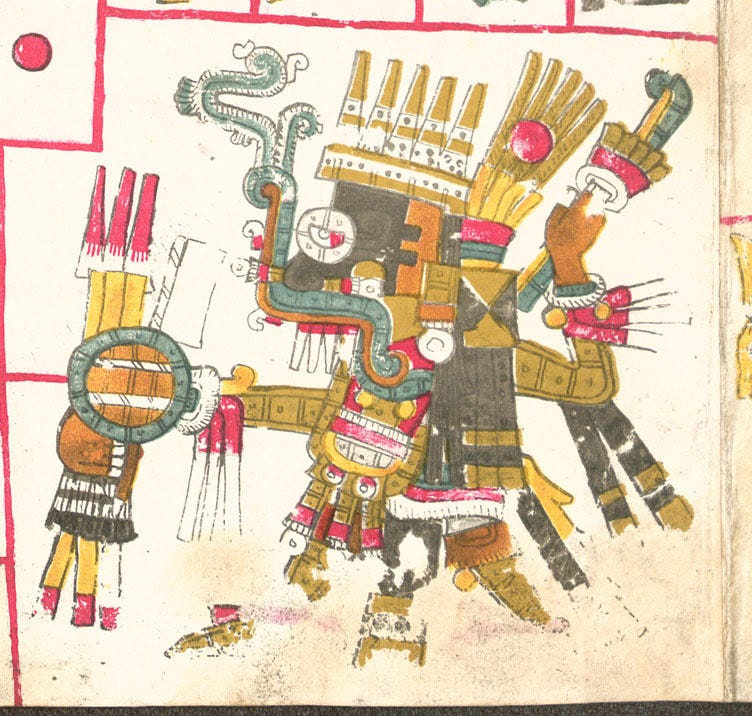Music Promotes Mushroom Growth
And the Intriguing Interplay of Mushrooms, Thunder and Lightning
The mystery of our strange and unique, mycological cohabitants on Earth enthralls us. For years now, mushrooms have acted as pop culture’s ingredient du jour, featured in everything from coffee, to the television series The Last of Us, to clothes made out of mushrooms. As our mushroom obsession grows it reveals our meager understanding of them. Consider these two, unusual, mushroom facts. Music promotes mushroom growth and thunderstorms accelerate mushroom fruiting. If thunder is music, then lightning is mushroom growth hormone.

Mushrooms Enjoy Music
Mushrooms appear to enjoy music like we do, as lab experiments have shown that fungi grow faster while playing certain sounds and frequencies. A mushroom study from the early 2000s demonstrated, “high-pitched sounds stunt their growth, while low frequencies help them thrive.” Mushrooms thrive on these low frequency sounds, which include music and thunder.
I learned about this intriguing fact not long ago. I didn’t catch the mycelial madness until a few years back when I lived on a hobby ranch, north of Chattanooga, Tennessee. I had no idea how much mushrooms thrive in Appalachia. I could take a few steps outside the fence around the house, and find a mushroom almost anywhere: in the gravel parking lot, on the hillside, in the grass, on fallen trees, and of course, on dung.
Mushrooms grew everywhere, in particular during rainy season. Most of the time, we played music on the porch outside, whether working, cooking, or hanging out. Is there another reason why the mushrooms congregated so close to the house? Maybe the mushrooms liked my DJ skills.
That’s a mind-manifesting thought. But mushrooms sharing my musical taste isn’t the only thing that strikes me, and makes a lightbulb go off over my head. No, that would be the relationship between mushrooms and lightning.
Are Mushrooms Metalheads?
The mushroom maestro Paul Stamets lit the mushroom and lightning spark on musician Matt Whyte’s Sing for Science podcast. When mushrooms get lit up by storms, “the 50,000 volts of electricity a log incurs when struck by lightning greatly stimulates the yield of the shiitake mushrooms growing on it.”
The mycelial magic grows more profound from here. Maria Popova from The Marginalian explains Stamets’ theory in this eloquent summary:
This is where Stamets’s deduction gets interesting: Before lightning strikes, thunder sounds — a rolling tide of low-frequency waves unspooling from the horizon. Having had hundreds of millions of years of evolutionary training and triumph by harnessing the elements and the environment, mushrooms would want something to awaken them to the impending rain event in order to get ready to absorb the water and electricity so beneficial to their propagation. Low-frequency sound waves, under this hypothesis, act as a warning bell — a mycelial clarion call for duty.
The army playing “Reveille” at 6 a.m. comes to mind. Thunder sounds the bugle call for mushrooms, then they fall into formation and march off to work. This all makes sense now. Wandering the woods in Tennessee, I saw numerous, towering, burnt and charred oaks. Often mushrooms grow mad all over these toasted oaks. The trees suffered lightning strikes.
I can’t help but wonder if mushrooms are metalheads. Mushrooms enjoying music and flourishing on toasted oaks feels metal to me. Including the fact that mushrooms love to ride the lightning, what’s more metal than that? Are they Metallica fans too? If so, I know which Metallica song is their favorite.
Maybe mushrooms aren’t all metalheads but one thing is certain. All mushrooms love playing with high voltage. When mushrooms engage with lightning a mystical marriage results, and legends abound in Mesoamerica.
Lightning Strikes Twice Early and Often in Mesoamerica
Fascinating lore around the world shares a common theme- lightning strikes mushrooms more than other flora and fauna. From North America, to Russia, Japan and Europe, many cultures and traditions share this myth. Maybe we can’t call this a myth now, considering what lightning does for shitake mushrooms. However, Mesoamerica may know what lightning does for mushrooms better than anywhere on Earth.
Lighting in Mesoamerica carries profound meaning:
Mushrooms have associations to lightning in legend and folklore because they often appear literally overnight after a lightning storm. In some cases, lightning is perceived as creating mushrooms. Mushrooms are “holy children” that appear in rituals involving the consumption the hallucinogenic “mushrooms of the earth” (Psilocybe mexicana Kumm) called ‘ene· di:z or ‘Thunder’s teeth’ among indigenous communities in Oaxaca. The rain-lightning god and his dwarf servants may explain the symbolic association of mushrooms to “holy children” often depicted as dwarfs. 1
Significantly, another psychoactive mushroom, the Amanita muscaria or ‘fly agaric’, is called ‘thunderbolt mushroom’ by Quiché Mayans.
Nahua, Mazatec, and Mixtec traditions all regard lightning as divine. The indigenous Mazatec and Mixtec people live in the state of Oaxaca, Mexico, legendary for psychedelic mushrooms. The belief that lightning creates mushrooms leads to fascinating mythology. Among Mesoamerican traditions, lighting represents celestial communication or intervention.
Mesoamericans regard mushrooms as sacred substances that enable healing, and other mystical benefits. Lightning comes as a message from the gods, connecting heaven and Earth. Thus, mushrooms are a pathway to the gods and and provide divine communion.
Fray Bernardino de Sahagún, a 16th-century Franciscan scribe, left us a vital clue in the Florentine Codex. Bernadino wrote that the Aztecs consumed teonanácatl (often translated as “flesh of the gods”) in sacred ceremonies. We may know the identity of that Mesoamerican, hallucinogenic mushroom:
Psilocybe caerulescens, known by the present-day Nahuatl Indians as teotlaquilnanácatl, is hypothesized to be the ceremonially-used teonanácatl mushroom cited by Sahagún in the 16th century.
This type of Mesoamerican lore extends beyond mushrooms too. Last night, a local Oaxacan bartender was telling me another legend about Tlaloc. According to some indigenous traditions, Tlaloc is also believed to have thrown lightning down from the heavens and struck agave and maguey. Cooking agave creates tequila, and cooking maguey produces mezcal. Even though mezcal is alcohol, it is best considered a spirit- as in “spirit of the plant.” Mezcal holds high regard as a plant medicine among the indigenous people of Oaxaca.

Dropping the Bass Boom on the Mushroom
There have been 2 or 3 violent thunderstorms in Oaxaca over the past couple of weeks. I’ll forever watch lightning and listen to thunder here in a different way now. The next thunderous storm that rolls through, I’ll peer northward to the Sierra Madre del Norte and wonder if the mycelial networks high up in the pine forests feel ecstasy, and delight in Tlaloc’s wrath.
In the end, music’s positive growth effect on mushrooms may not be that surprising. Theories have long suggested that playing music for plants, classical music in particular, aids their growth. Although skeptics of course cry foul, also keep in mind Masaru Emoto’s music and snowflake experiment.
This all begs the question, what kind of music do mushrooms like the most? The sound of thunder is characterized by a deep, bass sound. Maybe dropping the bass boom on mushrooms flushes them out best. Imagine if mushrooms thrive on electronica and have a favorite type of music or DJ out there. After all, Mesoamericans loved the drum, and had various types.
Paul Stamets encourages the symbiosis between music and mushrooms:
Think about this: Mycelium is stimulated to grow by sound waves. That means, when we play music and gather together, nature is listening through mycelium. Nature responds joyously with more mushrooms, more nutrients, and more food for life!
Regardless of which type of music you decide to play for mushrooms, just keep one thing in mind. When we discover the musical cubensis consensus, we might just catch divine lightning in a bottle.
“The rain-lightning god and his dwarf servants” refers to the Mesoamerican deity Tlaloc. Tlaloc is often blue with conspicuous, large, round eyes, that may even be interpreted as glasses. His servants are the tlaloques.




